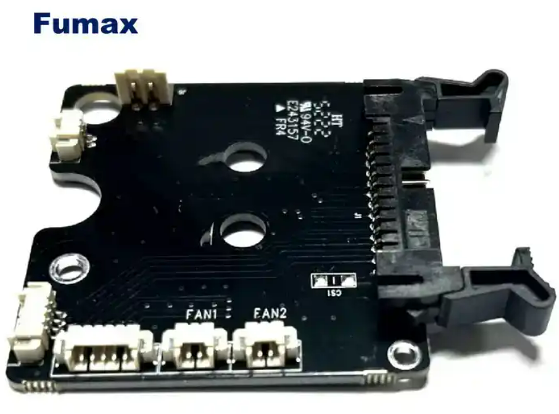Rigid circuit boards use traditional copper foil substrates, which have high mechanical strength and stability and are suitable for scenarios that require high mechanical strength and stability.
Rigid circuit board is a common electronic component. Its characteristic is that the circuit board uses a traditional copper foil substrate, which has high mechanical strength and stability.
Compared with flexible circuit boards, rigid circuit boards have significant features and advantages in many aspects.
The following are the characteristics of rigid circuit boards and their differences from flexible circuit boards:
Characteristics of rigid circuit boards
- High mechanical strength: Rigid circuit boards use solid substrate materials, such as FR4, CEM-1, etc., which have high mechanical strength and durability and can withstand large mechanical pressure and vibration.
- Good stability: The circuit design of the rigid circuit board is relatively regular and the layout structure is relatively fixed, so its thermal stability, electrical performance and reliability are relatively high.
- Suitable for mass production: The production process of rigid circuit boards is mature and the production efficiency is high. It is suitable for mass production and can meet the needs of electronic products of various sizes for circuit boards.
- Relatively low price: The production process of rigid circuit boards is simple and the manufacturing cost is relatively low. Therefore, its price is relatively low, which is conducive to controlling the cost of electronic products.

The difference between rigid circuit board and flexible circuit board
- Different base materials: The substrate material of rigid circuit boards is traditional glass fiber reinforced materials, while the substrate material of flexible circuit boards is flexible materials such as polyimide or polyester.
- Different applicable scenarios: Rigid circuit boards are suitable for scenarios that require high mechanical strength and stability, such as automotive electronics, industrial control, etc. Flexible circuit boards are suitable for scenarios where space is limited and can be bent, such as smartphones, tablets, etc.
- Different reliability: Since the circuit design of flexible circuit boards is relatively flexible, reliability problems may occur in some cases, such as solder joint embrittlement, material aging, etc. The circuit design of rigid circuit boards is relatively regular and the layout structure is relatively fixed, so its reliability is relatively high.
- Different manufacturing costs: The production process of flexible circuit boards is more complex and the manufacturing costs are higher, so their prices are relatively higher. The production process of rigid circuit boards is simple and the manufacturing cost is relatively low.
In summary, rigid circuit boards have the characteristics of high mechanical strength, good stability, suitable for mass production, and relatively low price.
They are suitable for scenarios that require high mechanical strength and stability.
Flexible circuit boards are bendable, thin and flexible, and are suitable for bendable scenarios with limited space. In practical applications, the appropriate circuit board type should be selected according to specific needs.
Rigid Circuit Boards and Flexible Circuit Boards FAQ
The main difference in structure between rigid circuit boards and flexible circuit boards is the base material and shape.
Rigid circuit boards usually use traditional glass fiber reinforced materials as the substrate and are in the shape of rigid sheets; while flexible circuit boards use flexible polyimide or polyester and other materials as the substrate, which can be bent and deformed.
What are the differences in applicable scenarios between rigid circuit boards and flexible circuit boards?
Rigid circuit boards are suitable for scenarios that require high mechanical strength and stability, such as automotive electronics, industrial control, etc. Flexible circuit boards are suitable for scenarios where space is limited and can be bent, such as smartphones, tablets, etc.
Since the circuit design of flexible circuit boards is relatively flexible, reliability problems may occur in some cases, such as solder joint embrittlement, material aging, etc. The circuit design of rigid circuit boards is relatively regular and the layout structure is relatively fixed, so its reliability is relatively high.
The production process of flexible circuit boards is relatively complex and the manufacturing cost is high, so its price is relatively high. The production process of rigid circuit boards is simple and the manufacturing cost is relatively low.
The heat dissipation performance of flexible circuit boards is relatively weak because the thermal conductivity of the base material is not as good as that of rigid circuit boards. Therefore, when designing flexible circuit boards, special attention needs to be paid to heat dissipation issues and corresponding heat dissipation measures must be taken. The heat dissipation performance of rigid circuit boards is relatively good because its base material has good thermal conductivity and can effectively transfer heat out.